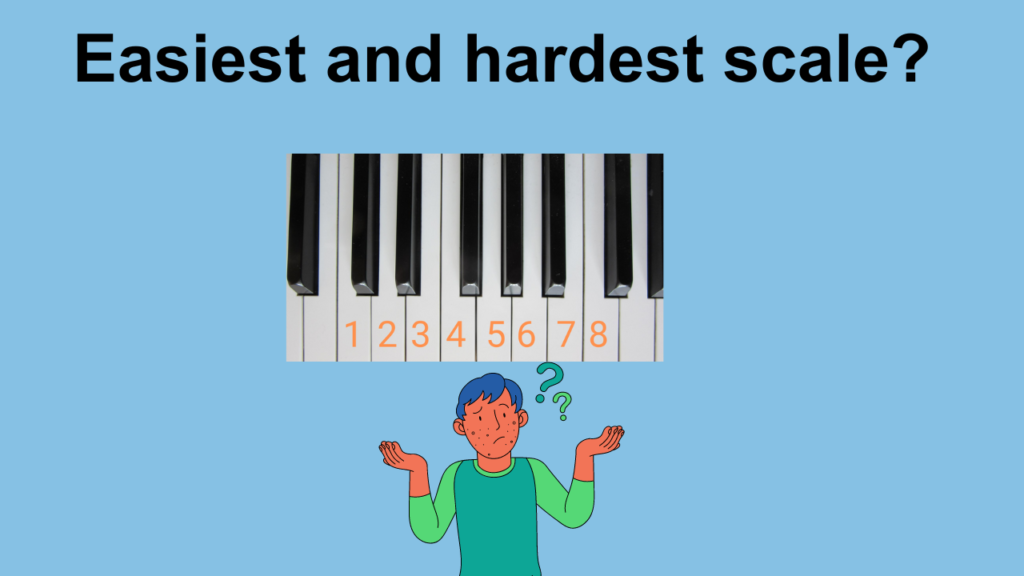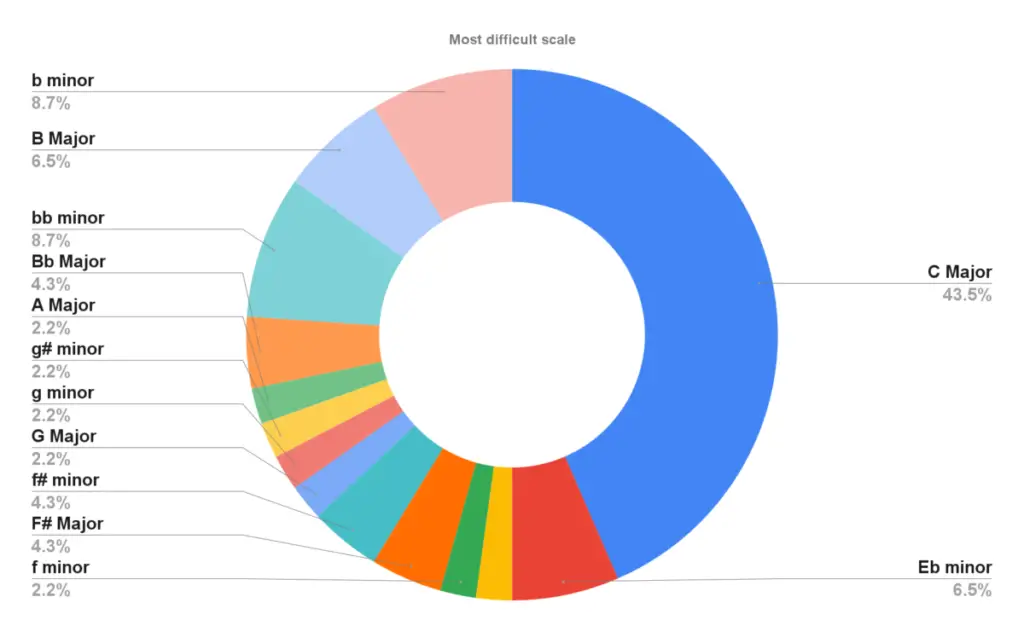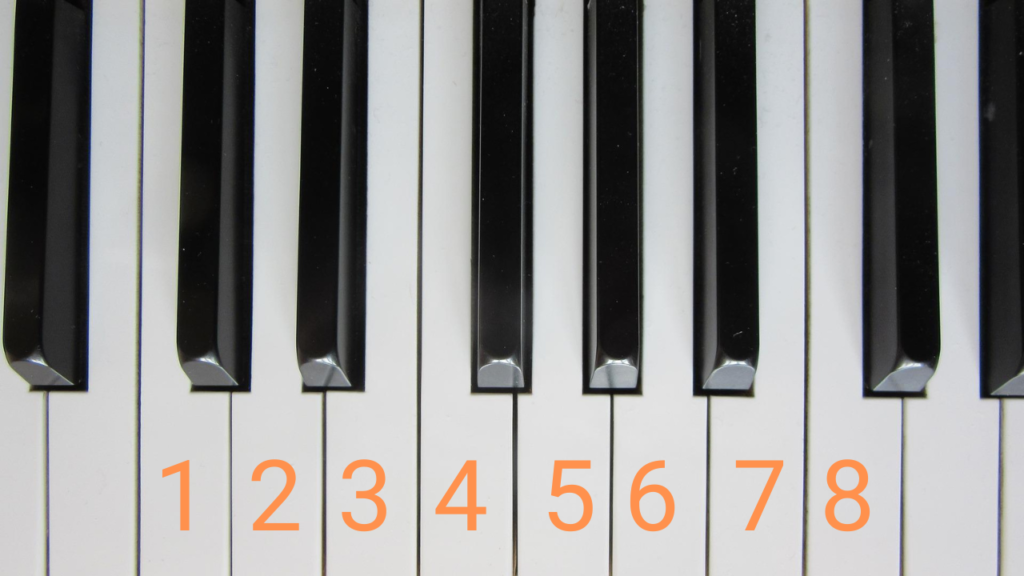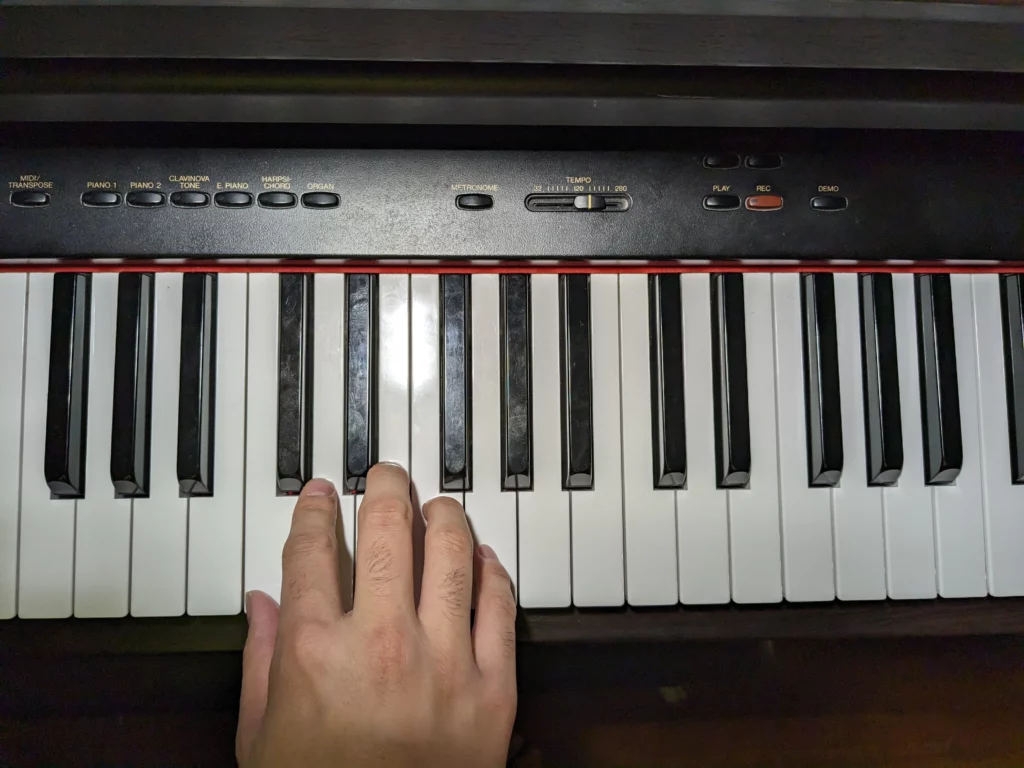This post contains affiliate links.
When asking other piano players about the easiest and hardest scale to learn, many say C Major is the easiest, while others say C Major is the hardest. How can this be? Though it might seem contradictory, both statements are true. C Major is a scale that is easy to learn but hard to master on the piano.

C Major scale is the easiest to remember because it only has white keys. However, because C Major has no black keys to guide your fingers, it’s the hardest to play correctly and evenly at high speed.
An interesting fact about the C Major scale is that although most piano teachers chose C Major as the first scale to teach their students, world-famous pianist and composer Chopin did the opposite – he taught his students the C Major scale last.
Continue reading as I explain in more detail why having no black keys is both a pro and a con for learning scales and whether you should learn the C Major first. I’ll also share some tips to help you practice scales in general.
Some interesting survey results
Firstly, I’d like to share the survey results where I asked people what they think is the hardest scale to learn. I held this survey because I wanted to know if the claim of the C Major scale being both the easiest and hardest piano scale was true.
Here are the results:

Of the 46 people who answered, C Major was voted the most at 43.5%, followed by B minor and Bb minor scale at 8.7%. The C Major scale won by a landslide!
This shows that although C Major is widely considered the most basic scale and is the go-to scale for any beginner, many people think it’s hard to play.
Why is C Major the easiest piano scale to learn?
The C Major scale is the easiest and most basic scale to learn because it has no sharps or flats. What this means is on the piano, C Major only uses white keys, making it easy to remember.

The relative minor of C Major is A minor. A minor is also easy to remember because it has no sharps or flats like C Major.
Why is C Major the hardest piano scale to play?
Playing the C Major scale slowly is easy. The difficulty comes when you raise the tempo (increase the speed).
In general, scales with black keys are easier to play because the black keys act as anchors that guide your fingers naturally and ergonomically. Black keys also act as signals to notify you where your hands are on the keyboard.
The problem with the C Major scale is because you’re only playing white keys, your hands are stuck in one form, and it’s harder to feel where you are on the keyboard. This makes tripping your fingers and playing the wrong notes more frequent than other scales.

Other than the C Major scales, B minor and Bb minor scales are also tricky to learn because B minor has awkward fingerings, while Bb minor has five flats to remember.
Should you learn the C Major scale first then?
Despite the difficulty of the C Major scale, it’s still the best scale to learn as a beginner. It’s easy to remember and serves as a good introduction to scales.
Furthermore, the C Major scale is only hard when you play it very quickly, which isn’t a short-term goal for a new beginner learning about scales. Playing the scale slowly and nailing the correct fingerings is more important.
After C Major, what’re the next scales to learn? Check out this article, where I discuss the complete order of learning scales using a useful tool called the Circle of Fifths.
Some tips for learning scales
Also, check out this article, where I share some tips for learning scales that I picked up along the way. The article also discusses the benefits of learning scales and how they can improve your piano playing.

